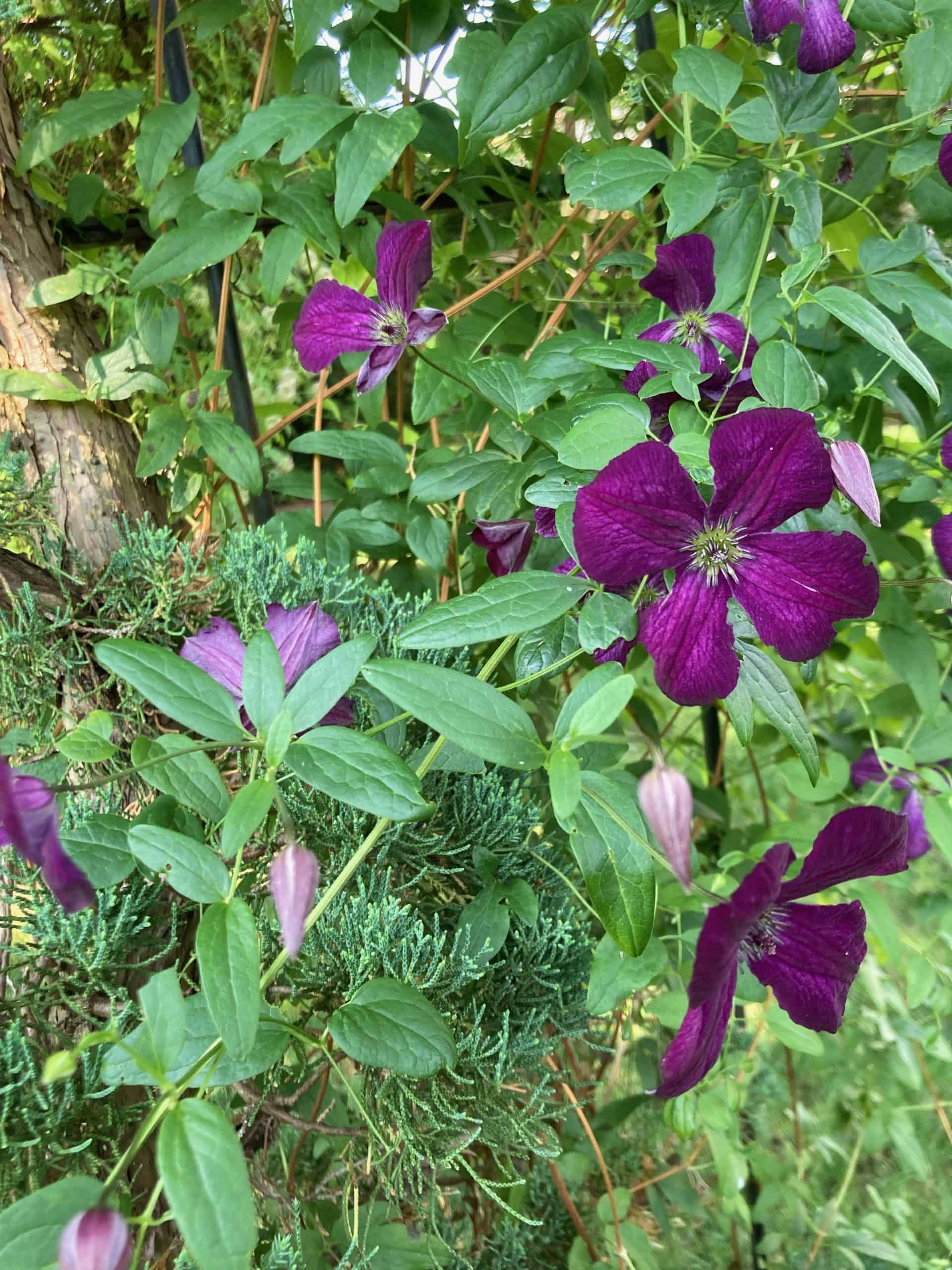There’s plenty of choice in the clematis family, and if you choose varieties from each of the three main groups, you can have blooms from early spring to early fall. If you want the vertical interest of their flowers, you’ll need to provide some sort of support for them to climb. It’s difficult for their wiry leaf stems to twine around anything bulky, so thin bamboo stakes, or metal obelisks or trellises often work best; nothing larger than one-quarter inch (6 mm) in diameter. The flat, wide trellising on wood fences doesn’t cut it. Or, you could let the vines scramble up the branches of a nearby shrub. For this application, it’s wise to choose clematis cultivars in pruning Group 3 or C, which are cut back in late winter. (Whenever you plant a new clematis, make note of which category it is and write it down; this will remind you of pruning requirements.)

“Making more clematis supports” offers a few economical, quick ideas for temporary supports.
If you’re searching for clematis that will take the heat, check out the article on “Heat-resistant clematis.”
More gardening ideas and news
• Next year will be the 25th anniversary of Canada Blooms, a national gardening show held in March in pre-pandemic times at Exhibition Place in Toronto. The theme for 2022 will be aptly named “New Beginnings.” I’m sure everyone is looking forward to an in-person event.
• I’ve never grown foxtail lilies, but I think it’s time I should. If you’re searching for more garden drama, as well, check out “Gardening 101: Foxtail lily” in Gardenista.
• I’ve also never grown saffron. Epic Gardening gives growing pointers in “How to grow saffron: the most expensive spice.” If you want to try your hand, too, Botanus, a mail-order company in British Columbia, carries Crocus sativus in its fall bulb catalogue.

